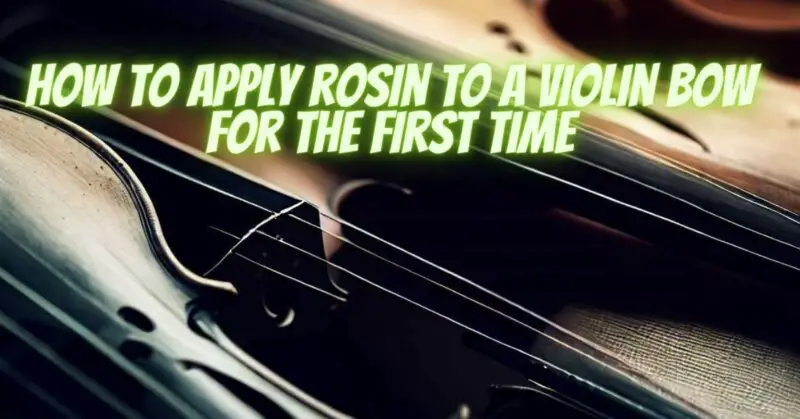Applying rosin to a violin bow for the first time is an important step in preparing your instrument for optimal sound production. Rosin provides the necessary friction between the bow hair and strings, allowing you to produce a rich and resonant tone. In this article, we will guide you through the process of applying rosin to your violin bow for the first time, ensuring a smooth and effective application that enhances your playing experience.
- Preparing the Bow:
Before applying rosin, it’s crucial to prepare the bow for optimal rosin adhesion. Follow these steps:
1.1. Loosen the Bow Hair: Turn the screw at the end of the bow counterclockwise to loosen the bow hair. Create enough slack to allow the hair to lay flat against the bow stick.
1.2. Inspect the Bow Hair: Carefully examine the bow hair for any debris, dirt, or excess rosin buildup. Use a soft cloth or dedicated bow hair cleaner to gently remove any impurities.
- Preparing the Rosin:
Remove the rosin from its case or packaging. Hold it securely between your thumb and fingers, ensuring a stable grip during the application process.
- Applying Rosin:
Follow these steps to apply rosin to your violin bow:
3.1. Place the Bow Hair on the Rosin: Hold the bow with the hair facing downwards. Position the bow at the frog end, with the frog facing away from you. Place the bow hair flat against the rosin, ensuring that the hair makes full contact with the rosin surface.
3.2. Apply Gentle Pressure and Move the Bow: With a firm yet gentle grip on the bow, apply light pressure as you move the bow back and forth across the rosin surface. Start at the frog end and work your way towards the tip, maintaining a smooth and controlled motion. Ensure that the entire length of the hair comes into contact with the rosin.
3.3. Repeat the Process: Continue applying rosin to the bow hair using the same gentle pressure and back-and-forth motion. Repeat the process several times to achieve an even distribution of rosin particles on the hair. Avoid excessive rosin buildup by applying just enough rosin for an optimal grip.
- Inspecting the Bow Hair:
After applying rosin, examine the bow hair to ensure that it has a slightly powdery appearance. The rosin particles should evenly coat the hair, providing the necessary friction for sound production. If the hair appears too powdery or sticky, you may have applied too much rosin. If the hair looks dry or lacks sufficient rosin particles, apply a few more strokes of rosin.
- Test and Adjust:
To check the effectiveness of the rosin application, play a few open strings or simple scales on your violin. Listen for a clear and resonant tone, ensuring that the bow grips the strings without slipping or squeaking excessively. If needed, make slight adjustments by applying a bit more or less rosin to achieve the desired sound and bow control.
- Regular Maintenance:
Over time, the rosin on the bow hair will wear off, necessitating regular maintenance. Before each practice or performance session, lightly rosining the bow hair is usually sufficient to reactivate the grip and sound production. Remember to periodically clean the bow hair with a soft cloth to remove any accumulated rosin residue.
Conclusion:
Applying rosin to a violin bow for the first time is an essential step in preparing your instrument for optimal sound production. By following the steps outlined in this article, you can ensure a smooth and effective application of rosin. Take the time to prepare the bow and apply the rosin with care, ensuring an even distribution on the hair. With a properly rosined bow, you can achieve a rich and resonant tone, enhancing your violin playing experience.


